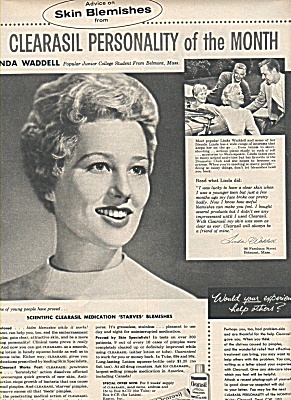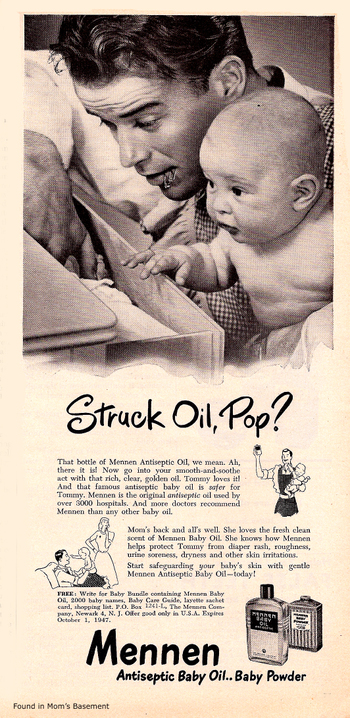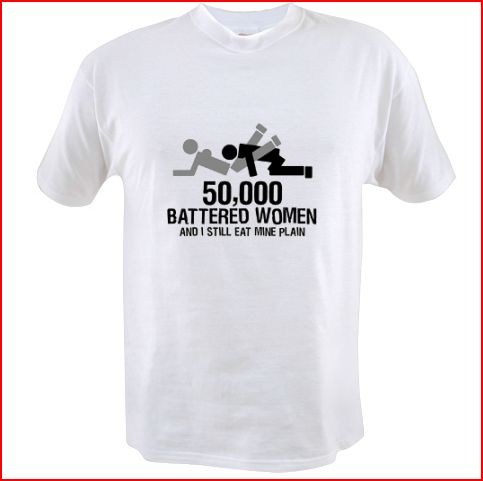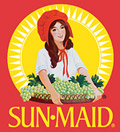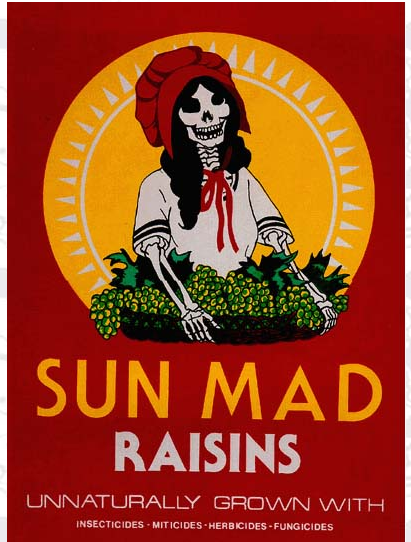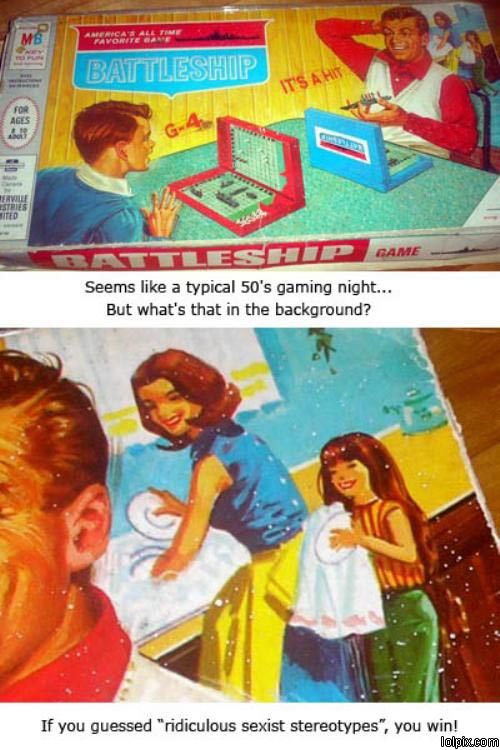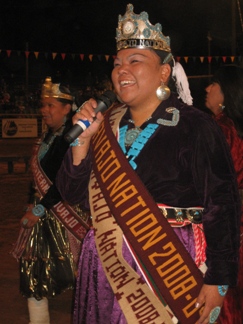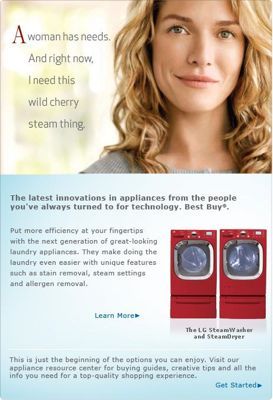In the 1950s, Clearasil started a new marketing campaign called Clearasil Personality of the Month. These were ads disguised as advice columns that ran in magazines. They featured the stories of real girls who wrote in to Clearasil to talk about their own struggles with acne and, of course, how they finally overcame this horrible affliction with the help of Clearasil. Here is an example (found here), a piece on a college student named Linda Waddell:
Sorry, the resolution isn’t good enough for me to be able to read all the text, so I don’t know what it says. The general layout was that teens and young women wrote in with little bios about themselves and descriptions of the problems they’ve experienced with pimples.
Notice the connection between clear skin and popularity–we see a picture of Linda surrounded by friends in the upper right corner (and, most importantly, a guy is clearly paying attention to her).
I originally read about this feature in Joan Jacobs Brumberg’s book The Body Project: An Intimate History of American Girls. She discussed it in the context of talking about increasing concern about acne and the rise of a whole host of products to combat it. However, I think it would be great for a discussion about advertising, particular about efforts to disguise advertising as simple information or entertainment (it’s still often difficult to distinguish these categories in women’s magazines). It’s also a good example of a marketing campaign that attempts to appeal to consumers by getting them to think of a product almost as a friend–here, the product is personified by nice, wholesome-looking girls who were just providing friendly advice to other girls just like them.
You still see the strategy of portraying products as friends that help women–for instance, ads for food products or cleaners that depict them as friends that help women get everything done, since apparently no one in their families will. See this post for a humorous take on some of these ads.

